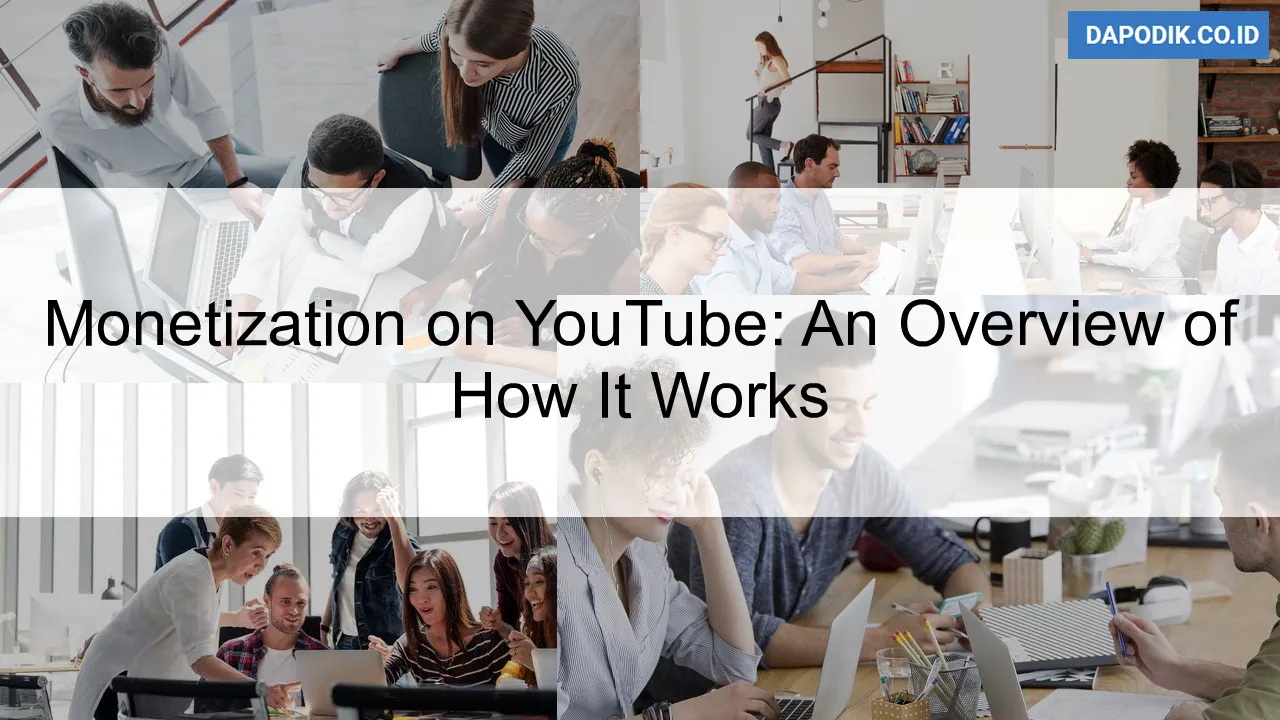Monetization on YouTube is an essential aspect for content creators looking to earn revenue from their videos. In this article, we will provide an overview of how the process works, including the requirements, ad formats, and revenue sharing opportunities.
The YouTube Partner Program and Eligibility Requirements
Monetization on YouTube is made possible through the YouTube Partner Program. This program allows content creators to earn money from their videos by displaying ads on their channel. However, not all channels are eligible to participate in this program. Let’s take a look at the eligibility requirements for joining the YouTube Partner Program.
1. Channel Eligibility
To be eligible for the YouTube Partner Program, your channel must meet the following criteria:
-
Your channel should comply with all of YouTube’s policies and guidelines.
-
Your channel must have at least 1,000 subscribers.
-
Your channel must have accumulated at least 4,000 watch hours in the past 12 months.
2. Advertiser-Friendly Content
Additionally, to monetize your videos, you need to ensure that your content is advertiser-friendly. YouTube has specific guidelines on the types of content that can be monetized. It is important to create original, high-quality videos that do not violate any copyright laws or contain inappropriate or harmful content.
3. AdSense Account
Finally, to receive payments, you need to have an AdSense account linked to your YouTube channel. AdSense is Google’s advertising program that allows you to earn money from ads served on your videos.
Meeting the criteria mentioned above is just the first step towards monetizing your YouTube channel. Once you are accepted into the YouTube Partner Program, you can start making money from your videos and exploring additional features and opportunities that come with being a YouTube partner.
Different Ways to Monetize YouTube Content
Monetization on YouTube offers content creators various opportunities to earn revenue from their videos. Here are some of the key methods:
1. YouTube Partner Program (YPP)
The YouTube Partner Program allows creators to monetize their content by displaying ads on their videos. To qualify, channels need to have at least 1,000 subscribers and 4,000 watch hours in the past 12 months.
2. Sponsorships and Brand Deals
Creators can collaborate with brands and promote their products or services in their videos. This can be in the form of sponsored content, product placements, or brand integrations. These partnerships can provide additional income streams.
3. Super Chat and Super Stickers
Live streaming on YouTube enables viewers to purchase Super Chats or Super Stickers, which are paid messages or animated stickers that stand out in the live chat. Creators receive a portion of the revenue generated from these interactions.
4. Channel Memberships
YouTube offers a membership feature that allows creators to offer exclusive perks, such as badges, emojis, or bonus content, to their subscribed members. Viewers can pay a monthly fee to become channel members, providing creators with a recurring source of income.
5. Merchandise Shelf
Creators can showcase their merchandise, such as branded merchandise or products related to their content, directly on their YouTube channel. This feature allows viewers to make purchases and supports the creator’s channel simultaneously.
These are just a few of the ways to monetize YouTube content. By utilizing these methods and creating quality, engaging videos, content creators have the potential to turn their YouTube channels into profitable ventures.
The Role of Advertisements, Sponsorships, and Merchandise
Monetization on YouTube has become a significant aspect for content creators, providing them with opportunities to earn income from their videos. One of the primary ways they generate revenue is through advertisements. Advertisements play a crucial role in YouTube monetization by allowing creators to earn money based on the number of views or clicks on the ads displayed in their videos.
Sponsorships also play a vital role in the monetization process. Many content creators collaborate with brands or companies to promote their products or services. In exchange, they receive financial compensation or free merchandise. These sponsorships provide an additional source of income for YouTubers and enable them to continue producing high-quality content.
Furthermore, merchandise sales contribute significantly to a YouTuber’s revenue. Content creators often develop their own merchandise, such as clothing, accessories, or even books, which their fans can purchase. These sales not only provide creators with direct income but also help to strengthen their brand and engage with their audience on a more personal level.
In conclusion, advertisements, sponsorships, and merchandise sales are essential components in the monetization of YouTube content. By utilizing these various revenue streams, content creators can continue to produce quality videos and engage with their audiences while also making a living from their passion.
Conclusion
In conclusion, monetization on YouTube offers content creators the opportunity to earn money through ads, channel memberships, merchandise, and collaborations. However, it is important for creators to adhere to YouTube’s guidelines and policies to ensure eligibility for monetization. By producing quality content, building a loyal audience, and staying consistent, creators can enhance their chances of financial success on the platform.
